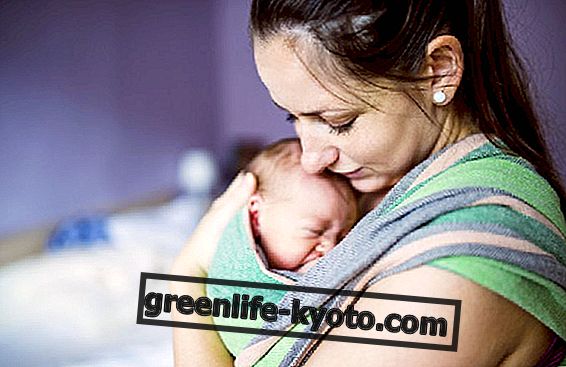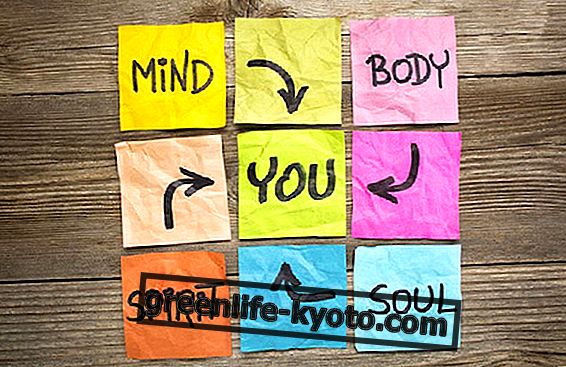The ketogenic diet is a diet that aims to maintain constant insulin levels through cibiricchi proteins and lipids and low in carbohydrates. Let's find out better.

What is the ketogenic diet
The ketogenic diet was structured in 1920 and was born as a treatment for children with epilepsy developed by the studies of several pediatricians, such as Rollin Woodyatt and Mynie Paterman.
The basic idea of the ketogenic diet is that through a diet low in carbohydrates but rich in proteins and lipids, the accumulation of fat is avoided and its use for energetic purposes is favored, maintaining insulin levels constant. The aim is to lower the glucose levels so that the body draws energy from fat, in fact.
If you follow a diet that is so structured, it will increase the calories burned and stimulate the secretion of hormones that promote the elimination of fat and reduce appetite.
When the metabolic system adapts to this situation, the body reduces the use of precious proteins, relying on fat burning and ketone bodies as a preferential source for producing energy. Ketone bodies are acidic by-products caused by high levels of fatty acid oxidation, ie the mobilization and combustion of large quantities of fatty acids as an energy resource.
In conditions of severe glucose deficiency, the body resorts to ketone bodies, which are normally produced in minimal quantities and are easily disposed of.
If the production of ketone bodies increases considerably, their accumulation in the blood generates a state called ketosis during which the blood pH is lowered, resulting in metabolic acidosis (typical in untreated diabetics).
The main foods
Very protein foods : ham, spek, bresaola, salmon, low-fat cheese, milk flakes, eggs. Again, steak, game, smoked meat, hamburgers, sausage, lamb, chicken. Olive oil is used for seasonings. To these foods are added rye bread, pistachios, walnuts and almonds.
You can learn more about foods rich in vegetable protein
Benefits and contraindications of the ketogenic diet
The effectiveness of the diet in cases of epilepsy is confirmed by science. Weight loss is guaranteed, but the ketogenic diet puts the body under considerable stress and only works immediately.
A glucose-free diet ends up overloading and poisoning the body . The high intake of fats and proteins, then, can create many problems that spill over to the heart and liver .
Then remember that the same results can be obtained with a normal and balanced low-calorie diet.
Ketogenic diet: ideal if
The ketogenic diet is recommended for children under the age of 10 suffering from epileptic forms not completely controlled by drug therapy. The establishment of a state of ketosis is in fact related to a reduction in the incidence of epileptic seizures.
Some recent studies have also suggested that this diet is effective for the short-term treatment of obese adolescents with type 2 diabetes .
Body builders who also want to dispose of excess fat immediately before a race often resort to the ketogenic diet.
Ketogenic diet: contraindicated if
Absolutely not recommended in case of liver or heart problems . In general, the diet is very stressful and even the healthiest body will suffer from various disorders: dehydration, loss of electrolytes, inadequate fiber intake, calcium and vitamins, and the appearance of kidney problems caused by high protein intake.
Faithful and famous of the ketogenic diet
In about October 1994 in America we have returned to talk a lot about the ketogenic diet. In that year the broadcaster NBC aired a service on Charlie Abrahams, son of the well-known hollywodian film producer Jim Abrahams .
At the age of two, little Abrahams began to experience strong symptoms of epilepsy and his father, after learning of some studies on the ketogenic diet, decided to take him to the Johns Hopkins Hospital to have him treated according to a structured therapy on the ketogenic diet regime. . The treatment worked and the symptoms of epilepsy were significantly reduced.
Abrahams was inspired by his personal story and engaged in the production of a film for television entitled First, do no harm (in Italian he was rendered with the unlikely: "A step towards tomorrow" ) in which the main protagonist, Meryl Streep, successfully addresses the child's epileptic disease through the ketogenic diet.
The producer also founded The Charlie Foundation, which has been involved since 1994 in supporting parents of epileptic children; at the home of the site, Meryl Streep herself explains the basic principles of the ketogenic diet.













